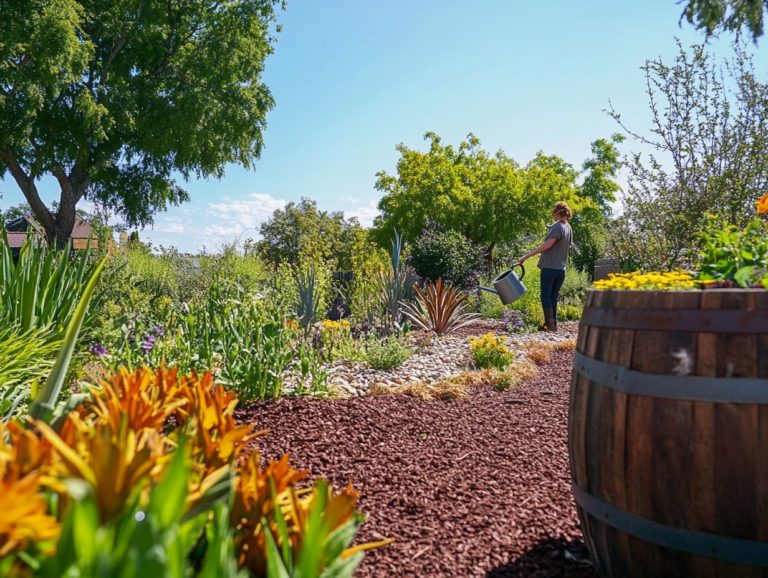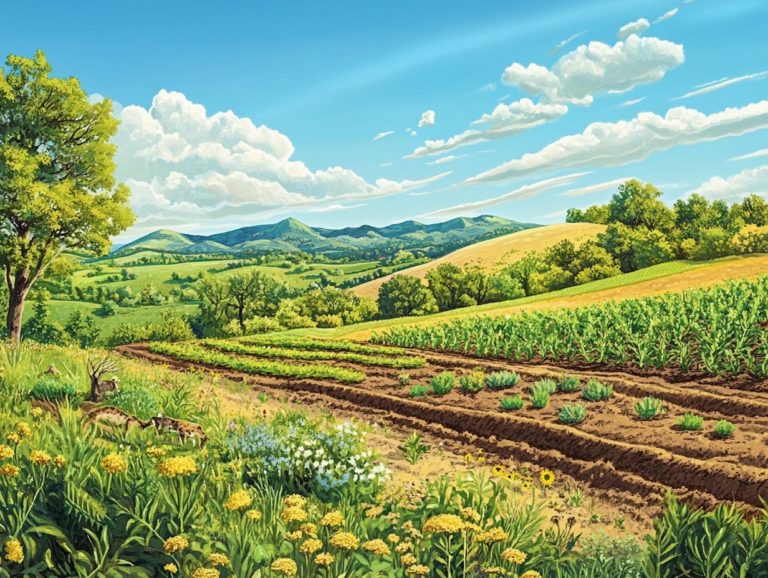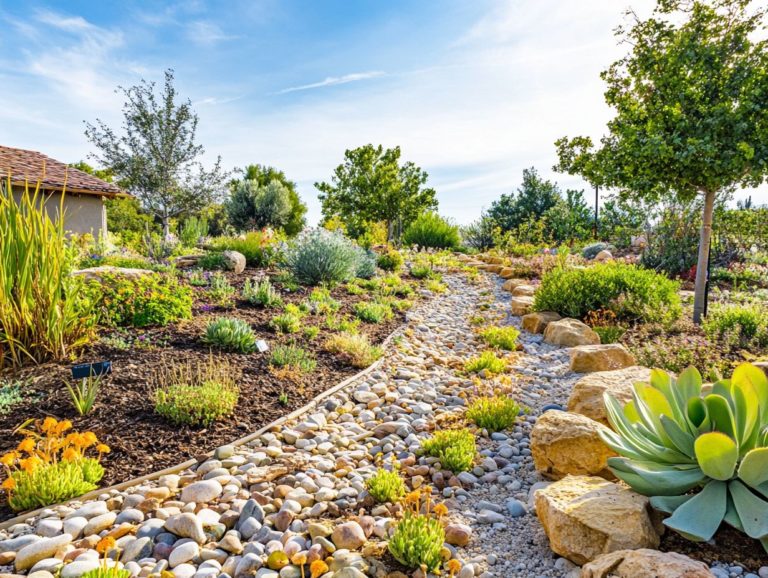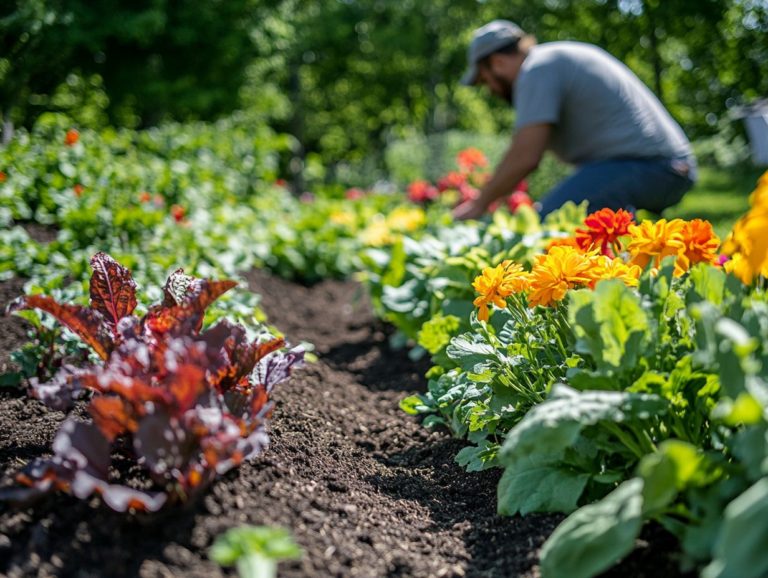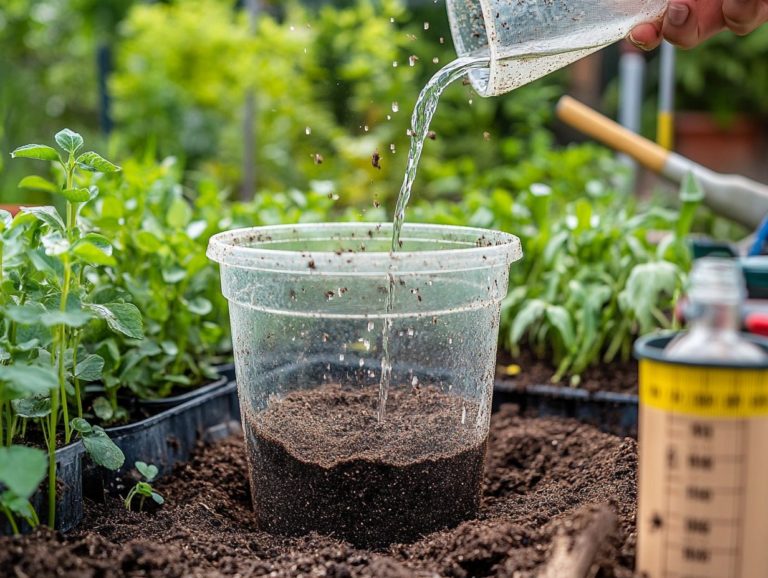How to Build a Swale for Water Management
Swales are an excellent solution for managing water runoff while enhancing the aesthetic appeal of your landscape.
In this article, you will explore the essentials of swales, including their definition, functionality, and the many benefits they offer, such as environmental advantages and potential cost savings.
This guide covers the planning and design process, ensuring that all critical factors are considered, followed by a detailed step-by-step construction guide.
You ll also find maintenance tips to keep your swale functioning effectively for years to come.
Curious about how constructing a swale can transform your property? Discover its vital role in sustainable water management!
Contents
- Key Takeaways:
- Understanding Swales
- Benefits of Building a Swale
- Planning and Designing a Swale
- Building a Swale Step-by-Step
- Maintaining and Troubleshooting a Swale
- Frequently Asked Questions
- What is a swale and why is it beneficial for water management?
- What materials do I need to build a swale for water management?
- How do I determine the best location for a swale?
- What are the steps for building a swale for water management?
- How can I maintain a swale for optimal water management?
- Can I build a swale on my own or do I need professional help?
Key Takeaways:
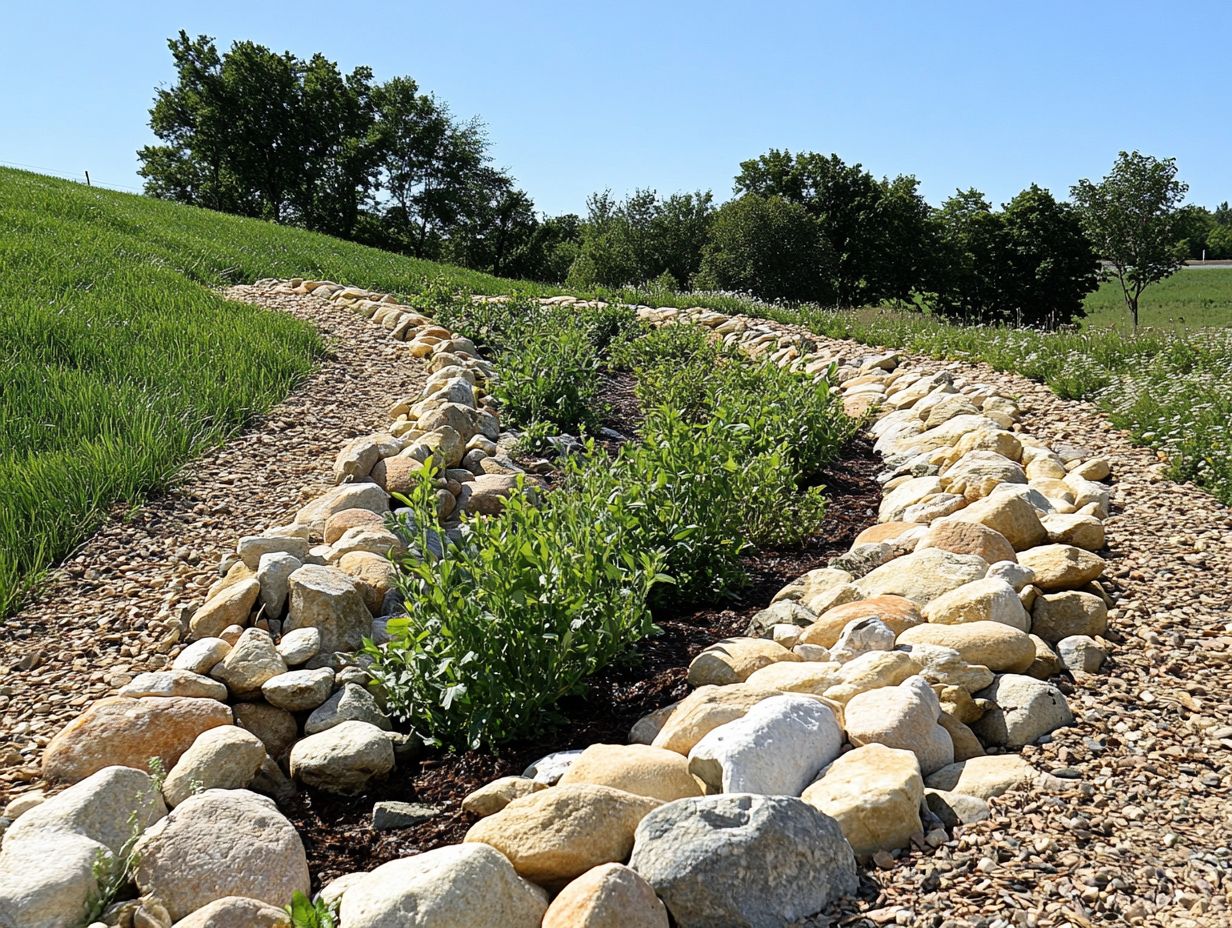
- Swales are an effective way to manage water on your property by directing and slowing down the flow, reducing erosion and promoting groundwater recharge.
- Building a swale can provide significant environmental benefits and cost savings by reducing the need for irrigation and stormwater management systems.
- Proper planning, design, and maintenance are crucial for the success of a swale. Consider factors like slope, soil type, and vegetation, and use tools like a level and transit for accurate construction.
Understanding Swales
Swales are shallow trenches designed for optimal water management. They enhance habitat quality and foster biodiversity in landscape design. By capturing and directing surface water, they prevent erosion and recharge groundwater, functioning as bioswales that blend into the environment.
Understanding how swales operate is essential for anyone involved in sustainable gardening or ecological restoration. They maintain ecological balance and promote environmental sustainability.
What is a Swale and How Does it Work?
A swale is a landscape feature that helps with water management. It directs runoff and promotes absorption using organic materials and carefully selected vegetation.
This earthwork typically takes the form of a shallow ditch or trench. It captures rainwater and allows it to infiltrate the soil, effectively creating a natural barrier against erosion. By integrating diverse plant species, particularly those with deep root systems, you can significantly enhance moisture retention and contribute to a thriving ecosystem.
Incorporating tall grasses, perennials, and legumes stabilizes the soil and enriches its fertility. Swales serve as invaluable water catchment systems in permaculture, acting as a sustainable water management strategy and a habitat for wildlife, ultimately fostering biodiversity while providing abundant yields.
Benefits of Building a Swale
Building a swale unlocks a world of benefits for your property! It enhances environmental sustainability, promotes improved biodiversity, and offers effective erosion control.
By doing so, you contribute to habitat diversity and bolster water conservation efforts across various landscapes.
Environmental and Cost Savings Benefits
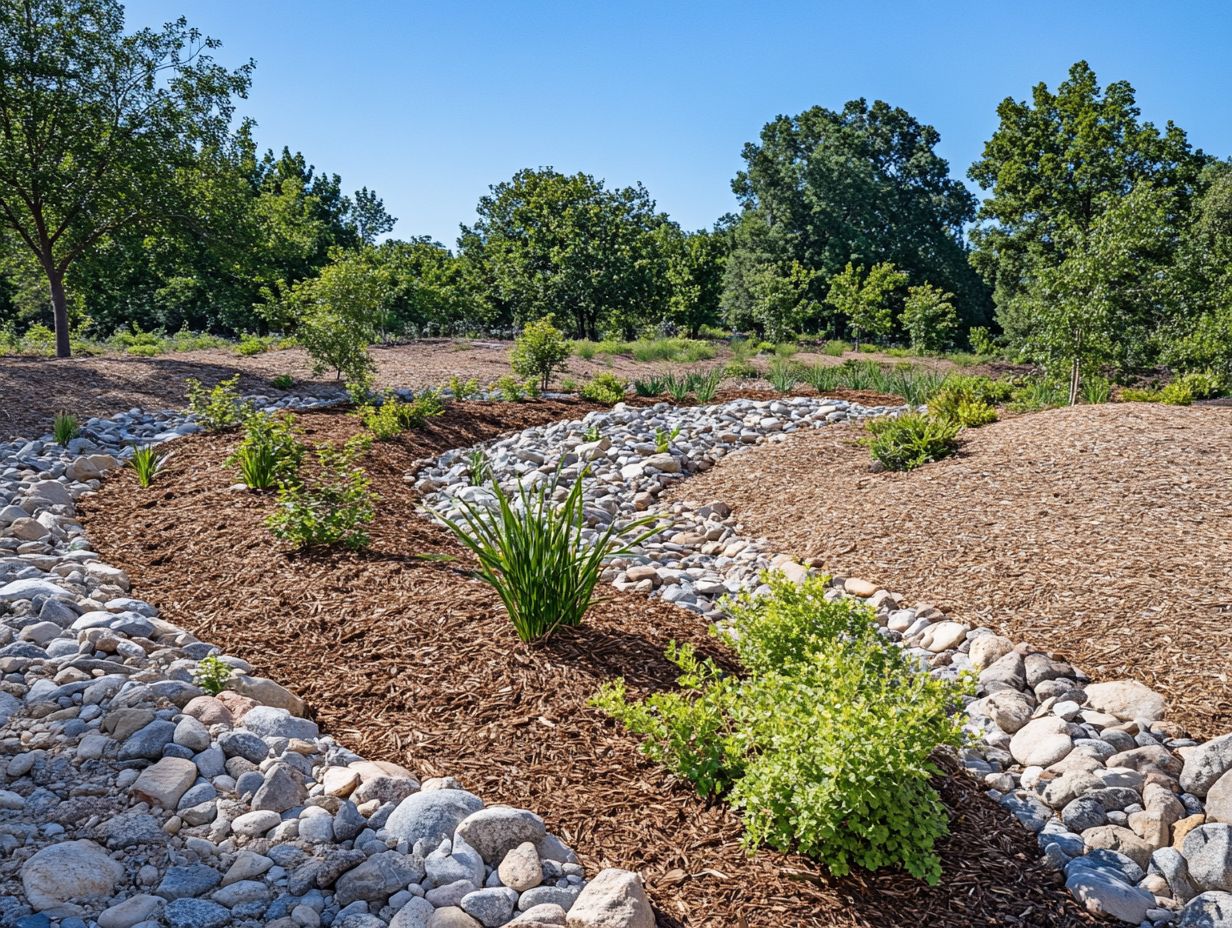
Swales do more than maintain ecological balance; they also provide significant cost savings over time by minimizing the need for advanced irrigation systems and enhancing drought resilience in your landscapes.
By incorporating swales into community conservation initiatives, you adopt a forward-thinking method to manage water resources sustainably. These gentle land depressions promote water infiltration, effectively reducing runoff and erosion while enriching the soil.
This means you can cultivate your crops with less reliance on costly irrigation infrastructure, resulting in lower operational costs, improved crop yields, and increased productivity.
The environmental benefits include heightened biodiversity and the creation of natural habitats, highlighting the essential role swales play in nurturing a resilient and sustainable agricultural ecosystem.
Ready to start your swale project? Explore more about sustainable practices and take the next step towards enhancing your landscape!
Planning and Designing a Swale
Effective planning and designing of a swale demands careful planning to ensure effective drainage strategies. You’ll want to take into account soil analysis, contour lines, and the right selection of tools to guarantee optimal performance and longevity.
Every detail matters in creating a successful and enduring swale.
Factors to Consider and Tools to Use
When planning a swale, carefully consider various factors, including topography, soil type, and existing landscape vegetation. You should also identify the necessary tools for construction, such as an A-frame level a tool for leveling land and earth-moving equipment.
The selection of tools significantly influences the ease and efficiency of your project. It s imperative to choose reliable, high-quality equipment specifically designed for swale construction.
Incorporating trees into your design aids in moisture monitoring. This also boosts biodiversity and promotes soil health.
These natural elements work harmoniously with the swale to manage water runoff effectively. This ensures that your landscape vegetation flourishes and contributes to a more resilient ecosystem. Consequently, every decision you make from tool selection to planting strategies plays a crucial role in shaping the swale s overall functionality and sustainability.
Building a Swale Step-by-Step
Building a swale step-by-step requires keen attention to materials, construction techniques, and the unique needs of your site. This thoughtful approach will enhance drainage efficiency and foster the growth of soil-holding grasses, creating a harmonious and sustainable landscape.
Materials and Techniques for Construction
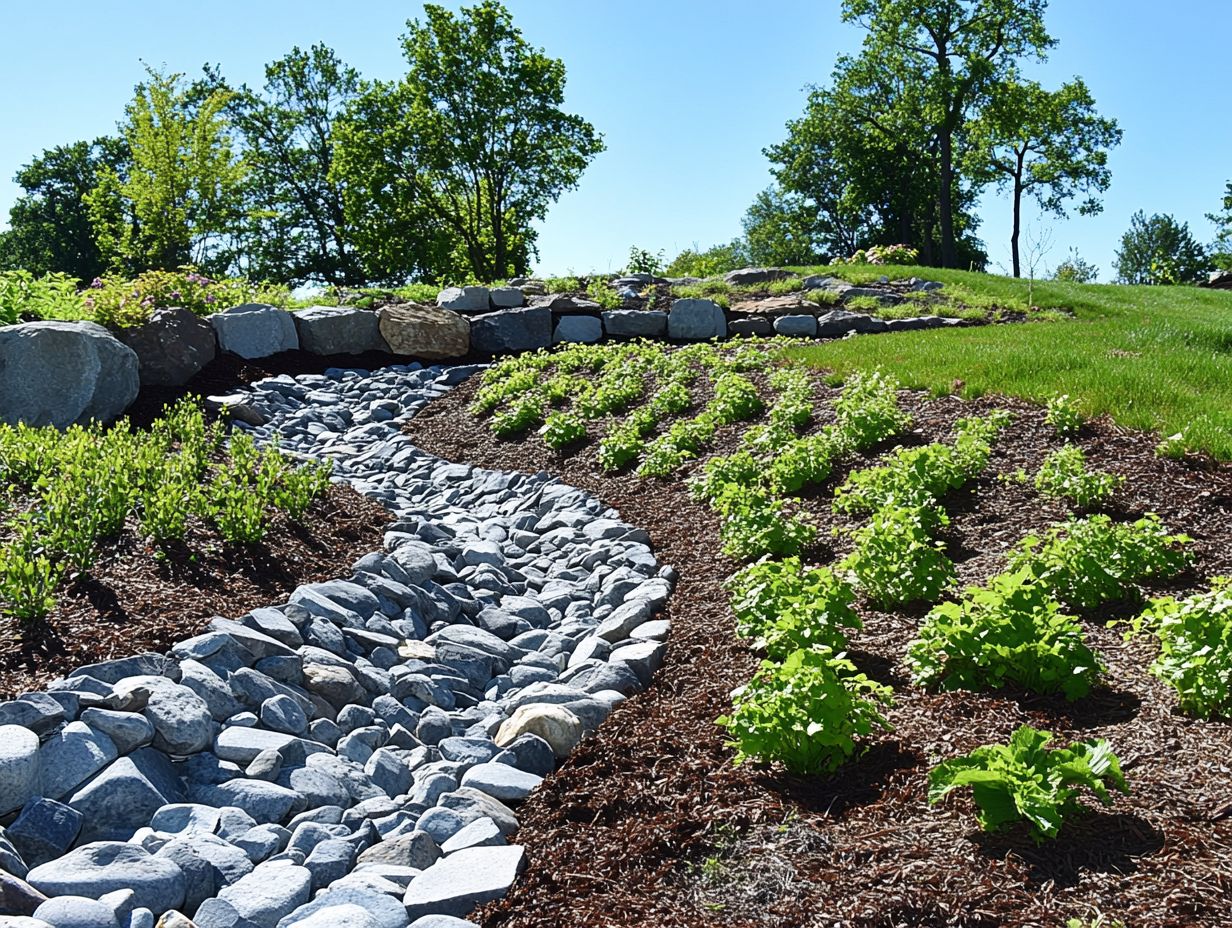
Selecting the right materials and employing effective excavation techniques is essential for successfully constructing a berm within a swale. This approach promotes optimal water flow and root stabilization for native perennials.
To achieve this, blend organic matter such as compost and aged mulch with gravel and soil that supports drainage and encourages plant health. Effective excavation techniques, including careful grading and layering, will help you create a stable profile that directs water without risking erosion.
Incorporating native perennials enhances the visual appeal of your landscape and provides ecological benefits, such as habitat creation and improved biodiversity. These plants are well-adapted to local conditions, requiring less maintenance while fostering a resilient ecosystem that thrives alongside your constructed swale.
Maintaining and Troubleshooting a Swale
Keeping your swale in top shape is essential for its long-lasting benefits! Adhering to best practices when troubleshooting issues related to moisture retention and erosion prevention will help maintain its effectiveness.
Best Practices for Long-Term Success
Implementing best practices for long-term success in swale maintenance requires active engagement in the community, sustainable gardening techniques, and regular assessments to ensure the habitat remains optimal and supports ecological restoration.
By fostering a sense of collective responsibility, you can join forces with community members to share knowledge and resources, cultivating a more resilient ecosystem. Consider organizing workshops to educate local residents about native plant species and the importance of biodiversity, further enriching the swale s environment.
Regular monitoring is crucial act fast if sediment builds up or invasive species appear. This ensures that these vital water management systems continue to function effectively. Embracing sustainable practices such as rainwater harvesting and organic amendments enhances soil health and helps maintain the long-term functionality of swales as essential habitats for wildlife.
This collective approach not only preserves ecological value but also strengthens community ties through shared stewardship of local green spaces, making your efforts all the more impactful.
Frequently Asked Questions
What is a swale and why is it beneficial for water management?
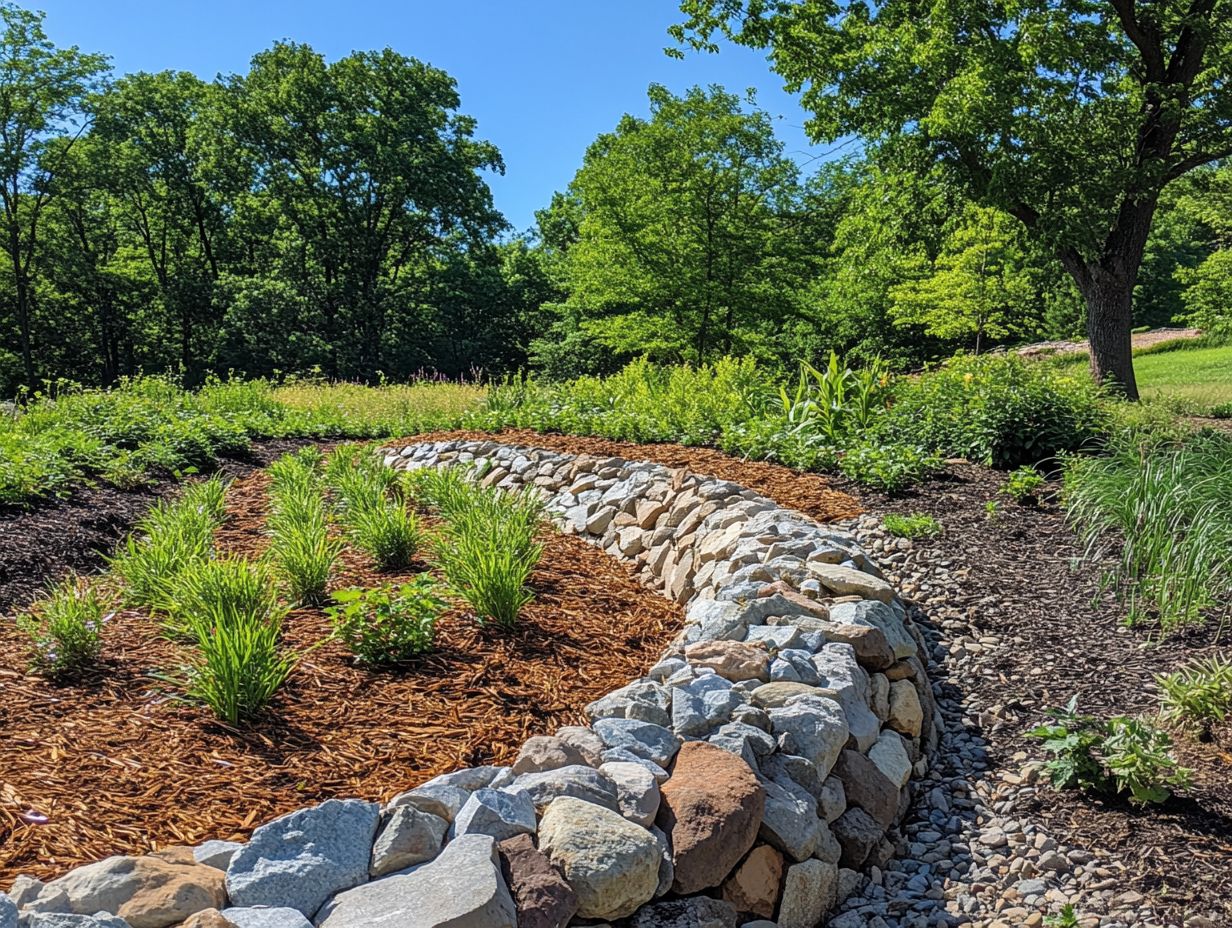
A swale is a shallow ditch created in the ground. It helps manage and redirect water flow effectively.
This method prevents erosion, improves drainage, and retains water for plants.
What materials do I need to build a swale for water management?
The materials needed vary based on the swale’s size and location. Common items include shovels, wheelbarrows, stakes, string, measuring tape, and landscaping fabric.
How do I determine the best location for a swale?
The best spot for a swale is on a slope or in an area where water collects. Consider the distance to buildings, trees, and any underground utility lines.
What are the steps for building a swale for water management?
To build a swale, mark the desired path first. Then, excavate the area to create a shallow trench.
Line the trench with landscaping fabric, fill it with gravel, and cover with topsoil before planting.
How can I maintain a swale for optimal water management?
Regularly check your swale for blockages or damage. Remove debris, weeds, and replenish gravel as needed.
Avoid dumping chemicals or pollutants into the swale to keep it functional.
Can I build a swale on my own or do I need professional help?
You can build a swale on your own, but professional help might be wise for larger or complex sites. Experts can ensure proper design and construction.
Ready to enhance your garden and manage water effectively? Start building your swale today!


